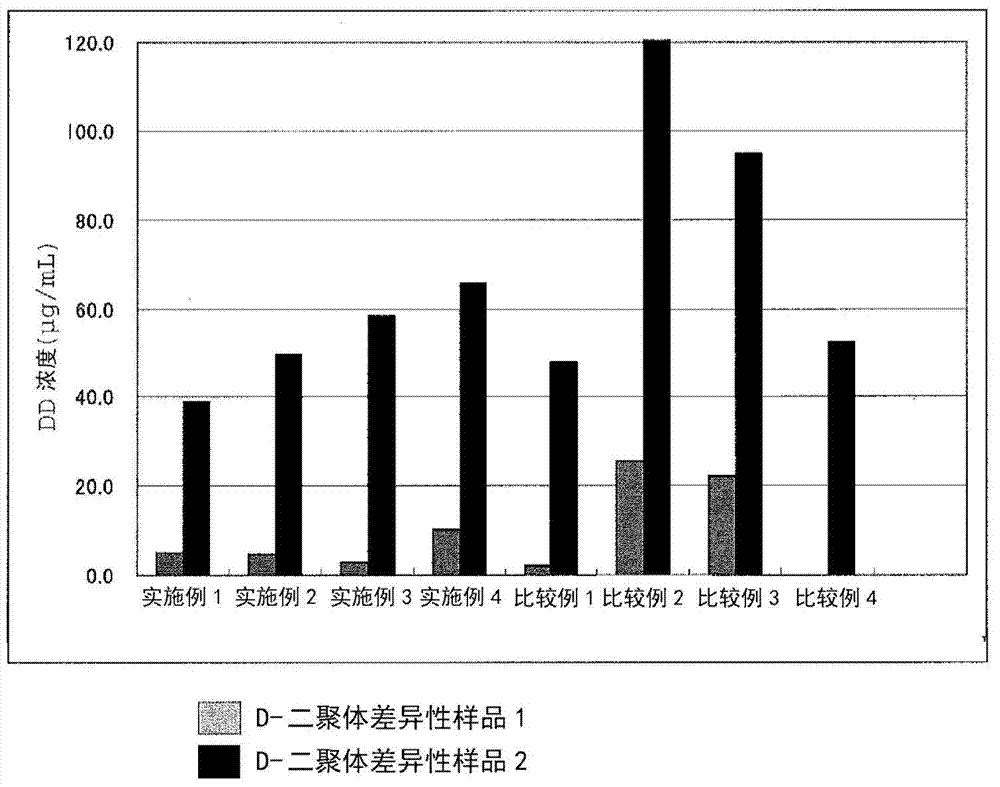Latex particles for agglutination assay
A technology of latex particles and hydrogen atoms, which is applied to measuring devices, instruments, and analytical materials, and can solve problems such as carrier particles that cannot be used as diagnostic agents
- Summary
- Abstract
- Description
- Claims
- Application Information
AI Technical Summary
Problems solved by technology
Method used
Image
Examples
Embodiment 1
[0085] Ultrapure water (1000g), styrene monomer (135g), Blemmer PE-90 (R 1 = methyl, R 2 =H, n=2, available from NOF CORPORATION) (0.24g), sodium styrene sulfonate (1.2g), and potassium persulfate (0.7g) were placed in a device equipped with a stirrer, reflux cooler, temperature detector , a nitrogen inlet tube, and a jacketed glass reactor (volume: 2 L). After purging the vessel with nitrogen, the mixed solution was polymerized at 70° C. for 24 hours with stirring at 210 rpm.
[0086] After stopping the polymerization, the solution was filtered through filter paper to extract latex particles. The latex particles were dialyzed for 48 hours through a dialysis membrane to refine the latex particles. The latex particles have a particle diameter of 0.109 μm (CV: 8.4%) and 0.192 μmol / m 2 PEG density.
Embodiment 2
[0088] Except for Blemmer PE-200(R 1 = A tomb, R 2 =H, n=4 to 5, available from NOF CORPORATION) (0.39g) instead of Blemmer PE-90 (R 1 = methyl, R 2 =H, n=2, available from NOF CORPORATION) (0.24 g), latex particles were prepared as in Example 1. The latex particles have a particle diameter of 0.108 μm (CV: 11.7%) and 0.191 μmol / m 2 PEG density.
Embodiment 3
[0090] Except for Blemmer PE-350(R 1 = methyl, R 2 =H, n=8, available from NOF CORPORATION) (0.60g) instead of Blemmer PE-90 (R 1 = methyl, R 2 =H, n=2, available from NOF CORPORATION) (0.24 g), latex particles were prepared as in Example 1. The latex particles have a particle diameter of 0.106 μm (CV: 9.8%) and 0.187 μmol / m 2 PEG density.
PUM
| Property | Measurement | Unit |
|---|---|---|
| Particle size | aaaaa | aaaaa |
| Particle size | aaaaa | aaaaa |
| Particle size | aaaaa | aaaaa |
Abstract
Description
Claims
Application Information
 Login to View More
Login to View More - R&D
- Intellectual Property
- Life Sciences
- Materials
- Tech Scout
- Unparalleled Data Quality
- Higher Quality Content
- 60% Fewer Hallucinations
Browse by: Latest US Patents, China's latest patents, Technical Efficacy Thesaurus, Application Domain, Technology Topic, Popular Technical Reports.
© 2025 PatSnap. All rights reserved.Legal|Privacy policy|Modern Slavery Act Transparency Statement|Sitemap|About US| Contact US: help@patsnap.com


